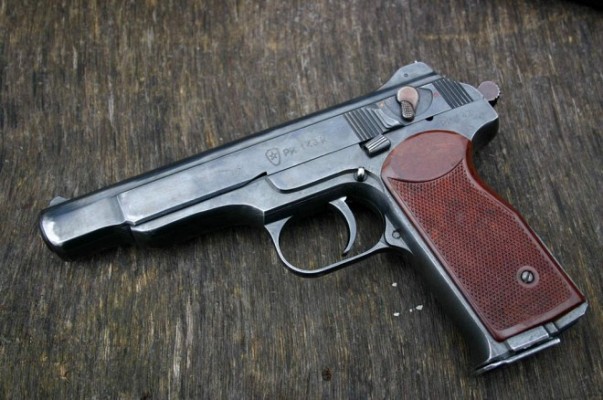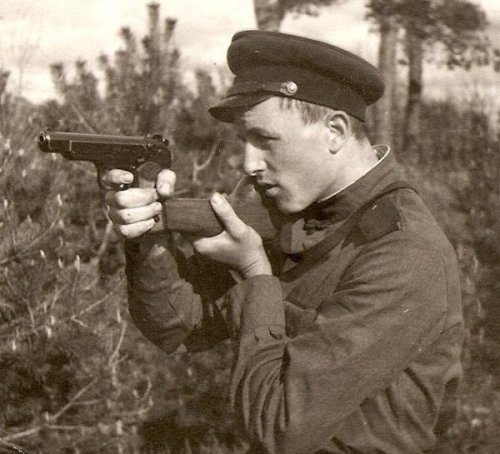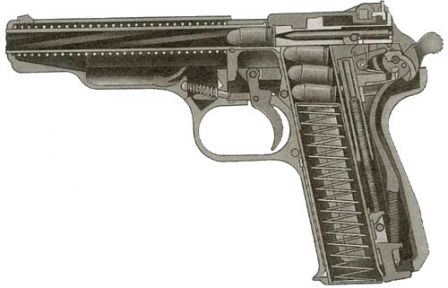APS
| Factions | Weapon | Icon | Classes | Ammo |
|---|---|---|---|---|
 VC |
 APS |
 |
20+1 / 80 |
| Damage Base | Headshot × | Chest × | Stomach × | Leg × | Arm × | Reload Speed | |
|---|---|---|---|---|---|---|---|
| Partial | Empty | ||||||
| 34 | ×2.4 = 81.6 | ×1.3 = 44.2 | ×1.2 = 40.8 | ×0.8 = 27.2 | ×0.75 = 25.5 | 2.66 Seconds | 3.2 Seconds |
| Designation | Weapon Type | Fire Modes | Fire Rate | Bullet Spread ° | Range Modifier | Muzzle Velocity | Projectile weight | Weight |
|---|---|---|---|---|---|---|---|---|
| APS | Machine Pistols | Auto+Semi | 750 RPM | 9° & 2.2° ADS | 0.73 | 320 m/s | 4.5 g (69.4 gr) | 1.51 kg (3.3 lbs) |
| Full name | Caliber | Place of Origin | Date | Manufacturer | Barrel Length | Total Length | Weapon Script Name |
|---|---|---|---|---|---|---|---|
| Avtomaticheskiy Pistolet Stechkina | 9×18mm | Soviet Union | 1951 | Vytatsky Polyany Machine-Building Plant | 5.51 in (140 mm) | 8.86 in (225 mm) | weapon_aps |
The Stechkin APS, a Soviet selective fire machine pistol introduced in 1951, is chambered in 9×18mm Makarov and 9×19mm Parabellum. It was designed for use by support crews in situations where assault rifles were unnecessary. Used in various conflicts including the Vietnam War and the Syrian Civil War, the APS was noted for its innovative design and controllability. However, its high production costs, complexity, limited range, and fragile buttstock. The pistol is named after its developer, Igor Stechkin.
HISTORY
Following the adoption of the AK-47, the need for a new self-defense weapon for military personnel like artillery and tank crews emerged, as submachine guns like the PPSh-41 became obsolete. Igor Stechkin, a fresh graduate from the Tula Mechanical Institute in 1948, developed an automatic pistol in response. This select-fire pistol, tested against other designs, showed potential during a 20,000 round endurance test, despite initial flaws such as its weight and non-adjustable sight.
After extensive redesign, borrowing elements from the Makarov pistol, Stechkin's APS was adopted by the Soviet military on December 3, 1951. Despite being initially issued broadly within the Soviet Army and seeing use in various conflicts, the APS’s complexity, size, and other issues led to its gradual phasing out. It found a later role among special forces, replacing the less powerful Makarov PM. The APS was eventually succeeded by the AKS-74U in 1981, which offered superior firepower and greater magazine capacity.
SOURCE





